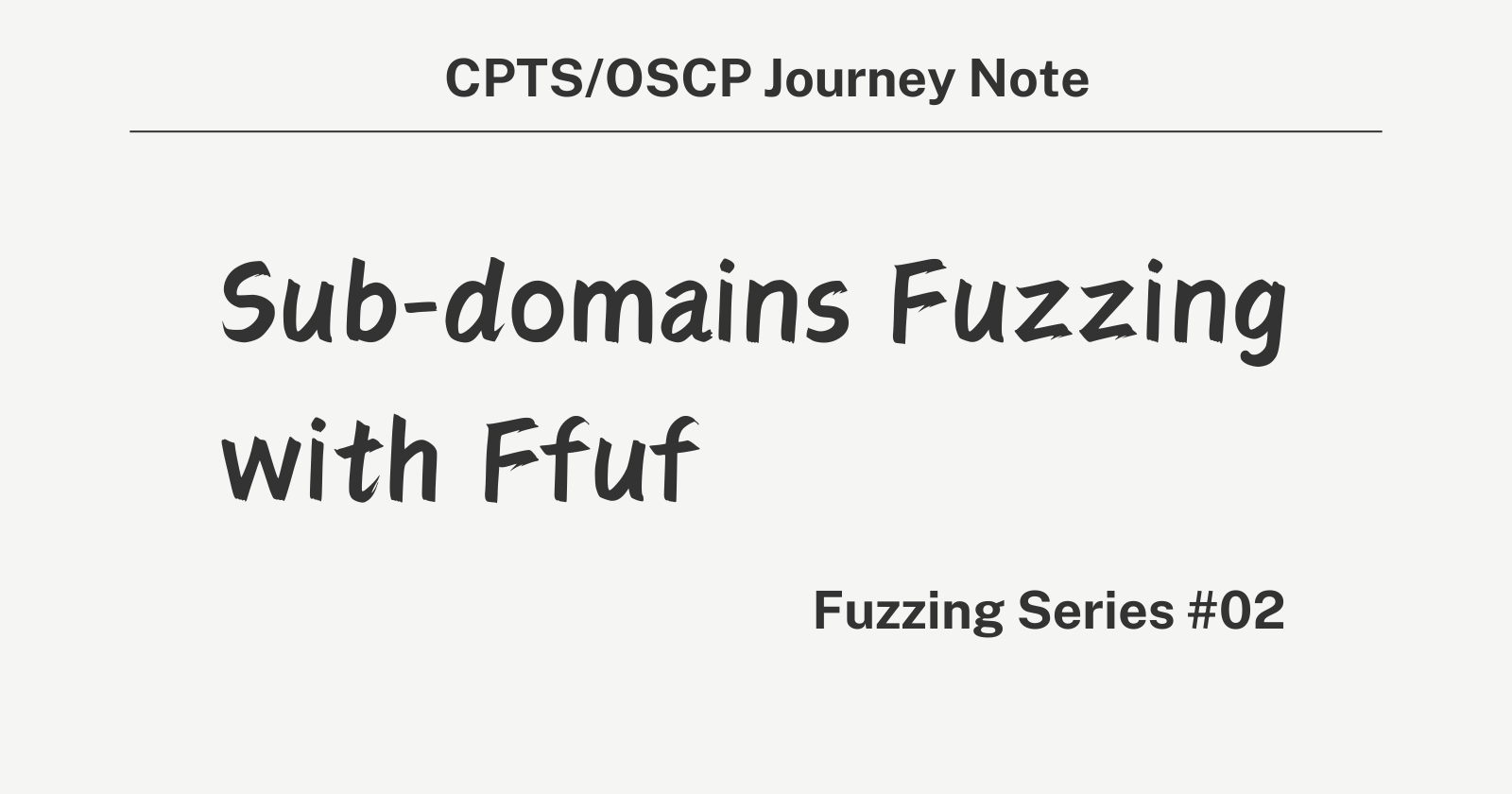Fuzzing series - Sub-domains Fuzzing with Ffuf - 02
 0xiN
0xiN
Introduction
Sub-domain fuzzing is a technique used in cybersecurity to discover existing but unlisted sub-domains of a given website. It plays a crucial role in information gathering and reconnaissance phase of a penetration test, providing insight into the target's infrastructure. This guide will walk you through the process of sub-domain fuzzing using the tool ffuf, a fast web fuzzer designed for discovering elements and content within web applications.
Understanding Sub-domains
Definition: A sub-domain is a subsection of a main domain, serving as a separate website or a specific service. Example:
photos.google.comis a sub-domain ofgoogle.com.Purpose: Sub-domains are used to organize and separate content within a website, often dedicated to different services or applications.
Prerequisites
Wordlist: A list of potential sub-domain names, typically common names used across different websites. Example:
subdomains-top1million-5000.txt.Target Domain: The website you wish to fuzz for sub-domains. Example:
inlanefreight.com.
Step-by-Step Guide to Sub-domain Fuzzing with ffuf
Setup and Installation
- Ensure
ffufis installed on your system. It's available on most Linux distributions and can be easily installed using package managers.
- Ensure
Selecting a Wordlist
- Locate an appropriate wordlist. For our purposes, we use
subdomains-top1million-5000.txtfrom the SecLists repository, which is a curated collection of lists used for security assessments.
- Locate an appropriate wordlist. For our purposes, we use
Identifying a Target
- Choose the domain you want to test. For instructional purposes, we'll use
inlanefreight.com.
- Choose the domain you want to test. For instructional purposes, we'll use
Executing ffuf for Sub-domain Fuzzing
Use the following command template, replacing the target domain as necessary:
ffuf -w /path/to/wordlist:FUZZ -u https://FUZZ.targetdomain.com/Example command:
ffuf -w /opt/useful/SecLists/Discovery/DNS/subdomains-top1million-5000.txt:FUZZ -u https://FUZZ.inlanefreight.com/
Analyzing the Results
- Hits are indicated by different HTTP status codes, such as
200(OK),301(Moved Permanently). Each successful hit represents a potential sub-domain.
- Hits are indicated by different HTTP status codes, such as
Further Steps
- For each discovered sub-domain, manually verify its accessibility and functionality. This can reveal additional areas for exploration or vulnerabilities.
Common Errors and Troubleshooting
No Hits: If no sub-domains are found, consider using a more comprehensive wordlist or ensure the domain is correctly spelled and accessible.
False Positives: Verify each found sub-domain, as some may not host relevant content.
Best Practices
Respect Legal Boundaries: Only perform fuzzing on domains you have permission to test.
Use Comprehensive Wordlists: Larger, more thorough wordlists increase the chance of discovering hidden sub-domains.
Checkpoint
- Try running ffuf with a different wordlist or against another domain to practice and solidify your understanding.
Further Exploration
Explore additional ffuf options and functionalities to refine your fuzzing techniques.
Study other fuzzing tools and methods for a broader understanding of cybersecurity practices.
Subscribe to my newsletter
Read articles from 0xiN directly inside your inbox. Subscribe to the newsletter, and don't miss out.
Written by
